Abstract
Wheat has the largest production volume in Europe as a whole, reaching 283Mt in 2022. While the region’s cereal production is primarily consumed for food, it also plays a significant role in providing animal feed. In recent years, there have been fluctuations in production volumes and trade due to factors such as climate change and the war in Ukraine. For example, grains from Ukraine occupy an important position in the European market, and fluctuations in export volumes have a direct impact on production and prices. Additionally, demand for animal feed is also increasing, and the demand structure for grain production is diversifying. Future production trends are likely to become even more complicated due to these factors.
Production(production (production volume))
From 1961 to 2022, cereal production in Europe has increased steadily, with wheat production showing particularly notable growth. In 2022, wheat production reached 283 Mt, the highest on record. During this period, wheat production has maintained 100% of its peak levels, supported by stable demand and production base. Especially since the 1980s, production volumes have increased due to advances in agricultural technology and more efficient use of farmland. However, since the 2000s, climate change and policy changes have affected production, particularly dry and extreme weather conditions that have reduced yields in some years. Nevertheless, wheat remains Europe’s major cereal crop and continues to enjoy stable production.
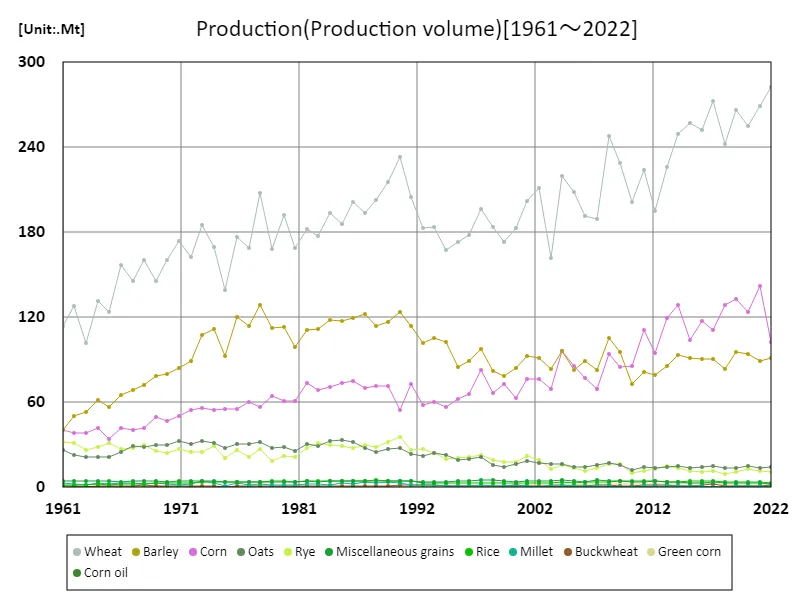

The maximum is the latest one, 283Mt of Wheat
Production (food)
Between 1961 and 2021, cereal food production across Europe has fluctuated. In particular, wheat production for food purposes peaked at 94.2 Mt in 1991 and has been declining since then. In 2021, production volume is declining, falling to 88.9% of its peak level. This decline is thought to be due to changes in agricultural policies, shifts in consumer diets, and climate change. For example, environmental concerns have led to agricultural diversification, with an increase in the cultivation of grains and crops other than wheat. Another factor is the relative decline in wheat production for food use, while production for animal feed and export has expanded. Nevertheless, wheat remains an important food crop in Europe and a stable supply is required to meet demand.
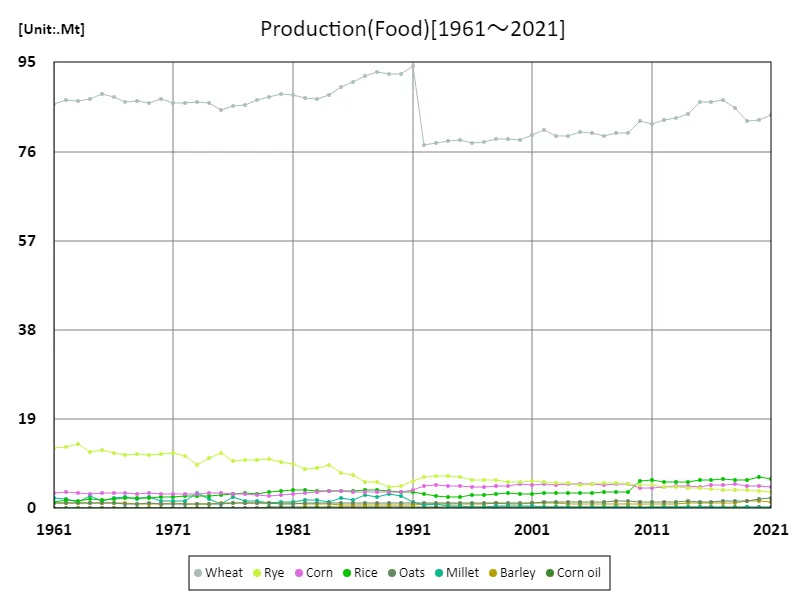

The maximum is 94.2Mt[1991] of Wheat, and the current value is about 88.9%
Import and export (exports)
Since 1961, the largest cereal export from Europe was wheat, reaching 150Mt. Total exports for the year were 253Mt, with an average export volume of 31.7Mt. Wheat in particular is Europe’s major export crop, and its export volume has been greatly influenced by regional agricultural production and international market demand. Over the past few decades, changes in agricultural policies and trade agreements, as well as climate change, have affected export volumes. Since the 1990s, with the expansion of the European Union (EU) and the progress of trade liberalization, Europe’s grain exports have increased, and wheat exports in particular to the Middle Eastern and African markets have become more active. However, in recent years, competition from Ukraine and Russia, as well as international trade restrictions and tariffs, may also have an impact. Overall, Europe remains an important player in the world grain export market.
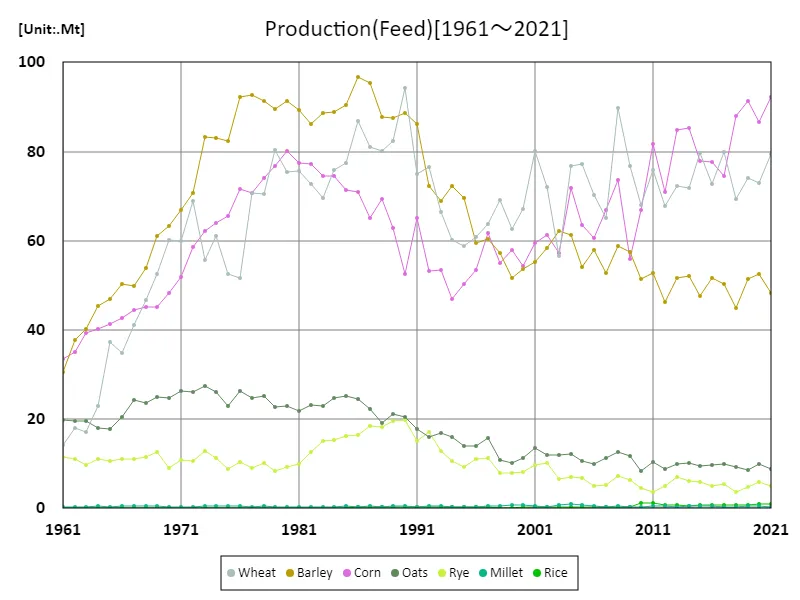

The maximum is 96.7Mt[1986] of Barley, and the current value is about 49.8%
Animal (feed)
Since 1961, barley has occupied an important place in the production of cereals for animal feed throughout Europe, with a maximum production of 96.7 Mt. This value remains the highest to date, and production continues to meet the demand for animal feed. In addition to being in demand as livestock feed, barley is also used for beer and food processing, so production volumes are increasing. In particular, demand for feed has been greatly influenced by the expansion of the livestock industry and consumption trends, and from the second half of the 20th century, as meat consumption increased, the production of feed grains expanded. In recent years, with environmental concerns in mind, feed efficiency has increased and barley production has stabilized. However, there are years when agricultural diversification and the expansion of production for export lead to temporary adjustments in animal feed production. However, barley is a key crop for animal feed supply in Europe and stable production is required.
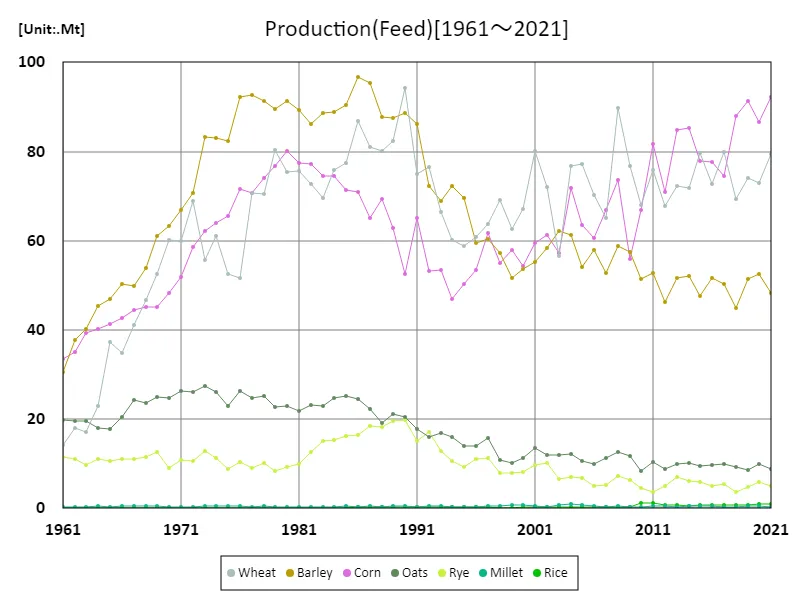

The maximum is 96.7Mt[1986] of Barley, and the current value is about 49.8%
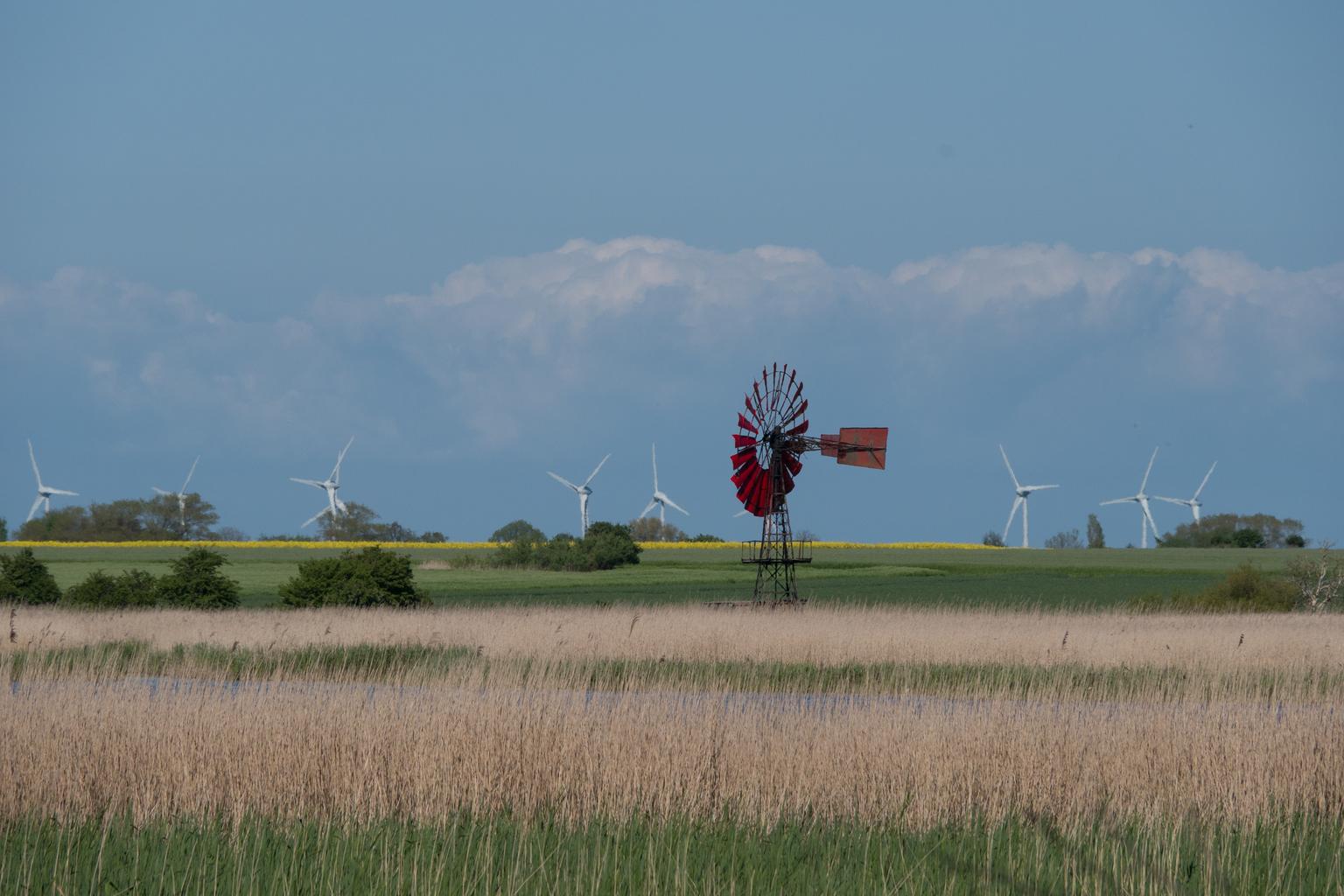


Comments